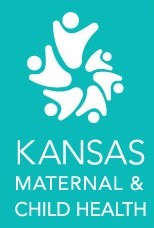Engaging in Leadership Roles

“Leadership is an action, not a position.” This quote from Donald McGannon is the perfect representation of family leadership. Leadership can come from many places and take many forms. Families and consumers can serve in leadership roles or capacities in a variety of ways. Engaging families and consumers as leaders is the ultimate form of engagement. At this level of engagement, the shift from ‘engagement’ to ‘partnership’ has been fully realized and the commitment to familycentered care and services has officially been institutionalized.
Just like the other levels of engagement, engaging families and consumers as leaders can be powerful – shaping programs and bringing betterment to their communities. Engaging families as leaders is not necessarily challenging, difficult, or any more time consuming than the other levels of engagement. It simply requires focus, intent, and commitment.
What is Leadership?
Providing either ongoing engagement opportunities, or one-time events, help families and consumers feel heard and listened to. Providing space for feedback and ideas builds trust and partnership within the communities you serve. In general, we've heard from families they love to give feedback on their experiences - both good and bad. However, often they only reach out to share when things did not work out so well - but many have expressed a desire (and joy) in also sharing the difference the services they received made in their lives. Creating advisory opportunities within your agency provides the space for that to happen.
Engaging in advisory roles also creates space to establish organizational champions in the community. If you take family and consumer feedback with an open and honest mindset - your program will be able to build and sustain in ways that profoundly impact those who use it. This can also bring empower families and consumers while strengthening your program or agency.
- Encouraging: Brings people together and strives to bring out the best in others.
- Courageous: Takes informed risks. Isn’t afraid to fail and try again. Is willing to be vulnerable.
- Collaborative: Gets involved and focuses on building partnerships among all for shared decision-making.
- Visionary: Looks broadly at the need and setsclear goals, expectations, and objectives.
- Honesty: Shows integrity and accountability in what they do. Trustworthy.
- Team-Focused: Focuses on the shared agenda. Looks at things from different perspectives. Strives to hear from all. Shares information, resources, and tools to help others be successful.
The terms “leader” and “leadership” can be intimidating to those who may equate this to access, education, paid or elected positions, or other types of status. When engaging with families as leaders, be clear about what this means to your organization. Use terminology that resonates with those you are serving. If, even after you describe leadership as an action, not a position, the families and consumers are still hesitant or not comfortable with that terminology, use something different. Again, it’s not about a position or a title, it’s about actions.
Families have expressed feelings of overwhelm (“This feels like too much for me.”) or inadequacy (“I don’t have the right credentials, education, or experiences.”), or lacking the confidence (“I’m not sure I have what it takes.”) when they were asked if they wanted to serve as a “Family Leader.” Building rapport can help families overcome these feelings. Organizational messaging around family engagement – that it is expected and part of the organizational culture – can go a long way to helping families and consumers recognize their value and the strengths they bring to the work.

The Benefits of Engaging in Leadership Roles
A key benefit to engaging families and consumers in leadership roles within your organization is that it can provide capacity and support to your organizations’ efforts and services. Family and consumer leaders work along-side staff, community partners, and others towards a collective achievement, as a core part of the team. They can assist with community awareness efforts, represent the organization when staff are unavailable, provide education and advocacy efforts to elected officials or policy-makers, expand your reach and increase numbers served, and lead family and consumer engagement efforts.
Family and consumer leaders provide insight into the services and supports you offer, as their lived experiences provides them the ability to share what staff and professionals simply can’t understand, as they have not “been there.” Certainly, some professionals have entered the workforce or began working in the field because of their own personal experiences, that’s very important. However, a benefit of a family leader, who is not paid staff, they can be completely focused on the family/consumer perspective and not have to balance their personal experience with their professional role. Generally, family and consumer leaders:
- Advisory - Self:Serve on advisory committees and/or task forces typically focused on specific issues, conditions, or populations. Input is provided based upon their own personal lived experiences only.
- Advisory - System:Serve on advisory committees and/or task forces that are more general to a system that represents many issues, conditions, or populations. Input is provided based on both their own personal lived experiences and those of others in their communities.
In addition, the group or program may have determined the focus to be at the “system” level, however the family or consumer may still be at the “self” level. This ultimately comes down to the intent of the family or consumer in engaging, or their own goals. Are they hoping to change something with their own family's impact in mind (self)? Or are they engaging with the goal of changing things for everyone that comes into the system behind them (system)?
Strategies to Create Advisory Opportunities
Engaging in an advisory capacity can look differently based upon your goals, organizational structure, capacity, and community. Some examples include:
- Strategic Planning Community Events: Limited number of meetings; beyond collecting input, rather focused on setting goals and priorities; can be specific or broad
- Committees or Work Groups: Groups established with specific outcomes; generally shorter in duration; specific to a program, topic, or activity
- Councils or Boards: Groups established with goals of oversight and monitoring; generally long-standing; focus is often on effectiveness, efficiency, and accountability
- TIP: Establish protocols and policies related to logistics, facilitation, organization goals/needs, and scope of work within the group BEFORE the group convenes.
- TIP: Be adaptable based on input received and willing to shift or adjust when possible
- TIP: Be open and transparent about goals and objectives. This includes letting families know about boundaries you have (e.g., what you can/cannot change, what constraints, must follow a certain plan or guidelines, barriers you are not willing to push).
- TIP: Providing a list of commonly used terms and acronyms can help families feel equipped to engage in discussions.
- TIP: Assure you have the capacity to provide support to prepare families and consumers for these efforts and can respond or follow-up based on outcomes of the meetings.
Tips for Meaningful Engagement
All experiences, both personal and professional, add value to an organization. Establishing and building rapport is essential to make lasting change. Building rapport includes viewing families and consumers as equals among staff and professionals and recognizing their preferences. For example, families have expressed feeling “less than” their professional peers in interdisciplinary advisory situations. One way to address this is to refer to them as a “Member” as a standard of practice, at least until you confirm their preference. These things, and the following tips, will help assure families feel their engagement is authentic and genuine - not simply to “check a box” for a grant requirement or “lip service” for community perception.
Strive to build knowledge, increase skill, and assure comfort.
- Establish a point of contact, or liaison, to assure families and consumers know they are an important part of the group. This includes connecting before and after meetings to support participation.
- Create a judgement-free space so people feel comfortable engaging and opening up. This can include establishing ground rules for the groups (e.g., no finger-pointing, avoid politics, use strengths-based language, focus on inclusion).
- Recognize the importance of race, ethnicity, and culture among members and that one's experiences and culture shape their views and beliefs.
- Expect respect and openness among members of the group, acknowledging that all cultural views bring equal value. Accept and appreciate that practices, perceptions, interpretations, and experiences differ for each member.
- Provide time and guidance associated with meeting preparations (e.g., let them know what to expect, discuss meeting objectives, go over materials or discussion questions to assure understanding).
Engage early. Engage often.
- While it's never too late to make changes, it's certainly harder later in the process. Bring in families and consumers early in the process of designing, evaluating, or making changes to your program.
- Allow space for families and consumers to engage at every step (design, implementation, evaluation) and assure they are involved in the whole process.
- Set clear expectations on what you are wanting and what is expected, however do allow for family or consumer brainstorming sessions to finalize plans or set priorities.

Listen with intent and encourage open discussion.
- In all encounters, be sure to allow enough time for open discussion. Ask open ended question and non-committal responses to keep the discussion going.
- Strive for a balanced discussion, assuring all members are sharing ideas and feedback and minimizing time spent hearing from the agency.
- Engage active listening skills and be careful to not “talk at” the families or consumers.
- Be open to what you hear, even if it is not what you think they should think or do. Give space for their perspectives and provide facts as needed to assure understanding
Actions speak louder than words - make the family/consumer experience special.
- Consider the “little things” that you can do to make families feel welcomed, supported, and appreciated.
- Provide reimbursement for out of pocket costs (e.g., child care, travel) and compensation for participation (e.g., stipends). If the professionals are being paid to be there, they should be too.
- Meet families and consumers where they are. Consider their schedules and needs when scheduling (e.g., non-traditional business hours, meetings on weekends).
- Consider making it a point to give family and consumers the first and last opportunity to speak during interdisciplinary groups, this shows their voices are heard, respected and recognized by all members!!
Summary
Engaging families in leadership roles is just like any of the other types of engagement. It’s not an exact science and it must be individualized for the organization or community culture. There is no magic curriculum to helping build family leaders, which makes perfect sense – since it is not about education, training, titles, positions, or professional backgrounds. It is about identifying interested families and consumers who strive to make a difference in their community and building relationships through asking for input or feedback and asking for support through advisory roles. It’s inviting them in at every stage of a program - planning, implementation, and evaluation.

